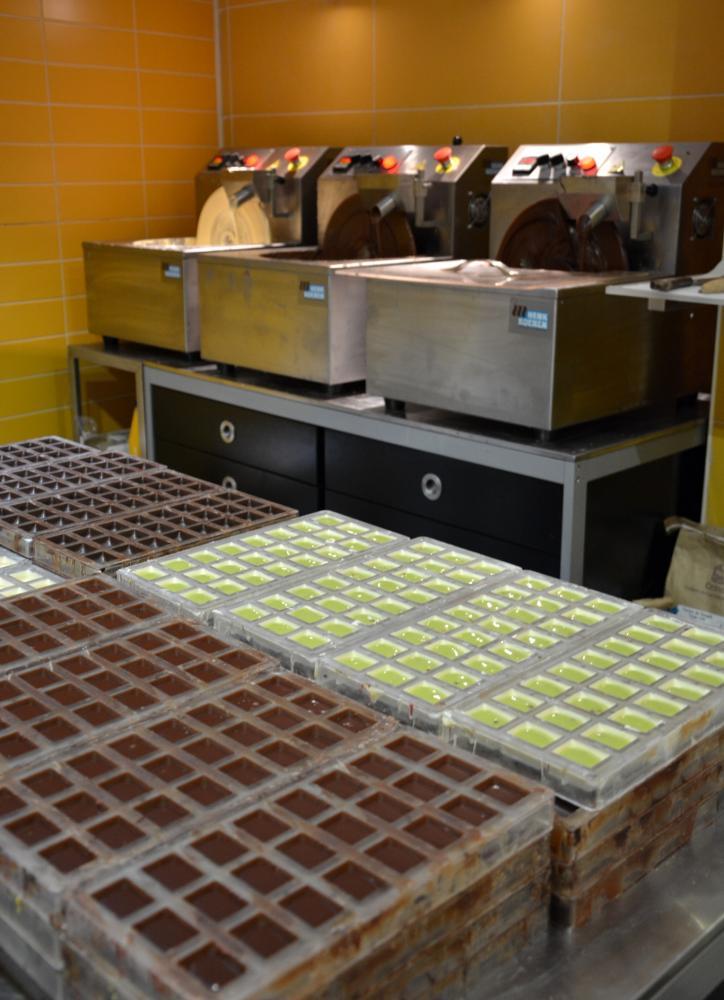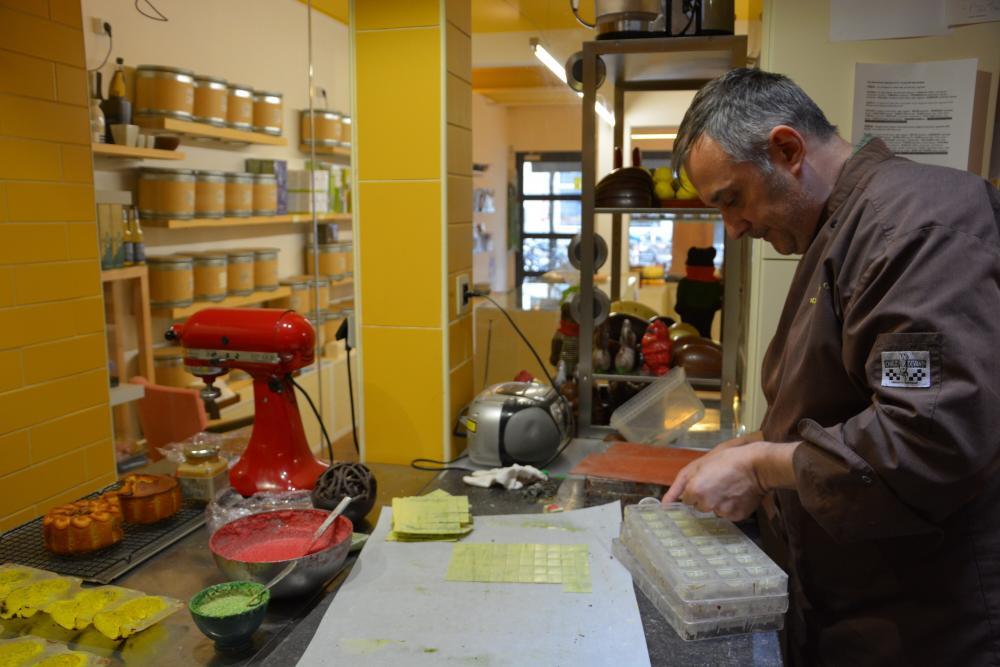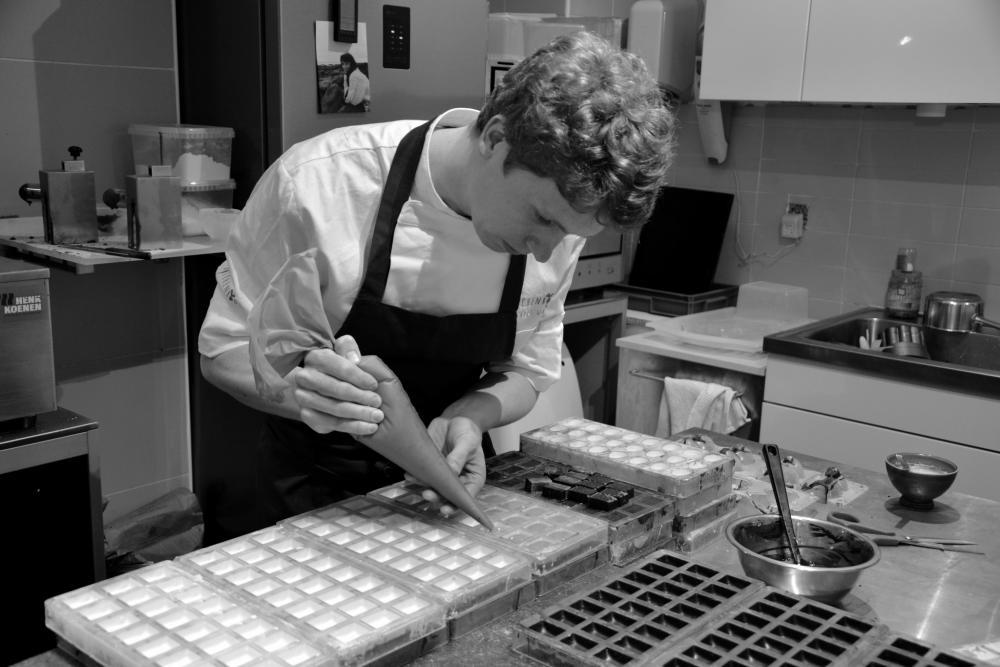Chocolate, a bittersweet temptation unwrapped
When tasting chocolate, you can discover flavours and aromas as diverse and as interesting as you can in coffee or tea. I even like to compare it to wine up to a certain extent, because just as you pair wine to a certain dish, the choice of the chocolate will also result in a different dimension and experience in deserts or pralines.
In the process of making chocolate, there are a few steps that impact this eventual tasting experience… Let me briefly tell you how chocolate is made:
Cocoa trees grow in the tropical forests along the equator and as from the age of five they start to grow cocoa pods. After the cocoa pods are harvested, twice a year, the farmers open them and take out the gluey beans to leave them to ferment for about 5 to 7 days covered with banana leaves. This is recently found to be the most important process of the chocolate making while it basically determines the flavour of the chocolate, that’s why today there’s a lot of research in how to control this fermentation process. And actually it’s not any different for beer, bread, wine, coffee or yoghurt and cheese, we do consume a lot of fermented products without thinking about it… In all these foods, the fermentation process is crucial for the flavour development.

Back to the chocolate for now!
Once fermented, the beans are dried in the sun and lose up to half their weight. Here’s where it generally ends for the cocoa farmer. The dried beans are then sent to the chocolate maker who finalizes the process, creating this sweet temptation to die for.
First the beans are cleaned to remove the dust and dirt and are then roasted, which besides improving the taste also makes it easier to remove the shells.
Here’s where the actual process of chocolate making really starts; the nibs are ground to cocoa mass and subsequently liquefied through heating to obtain cocoa liquor. By pressing this liquor the cocoa butter is separated from cocoa solids, commonly known as cocoa powder. Cocoa mass generally consists of 55% cocoa butter and 45% cocoa powder.
To make chocolate, the butter and powder are reassembled and blended with sugar, optionally also with milk powder to produce milk chocolate. For white chocolate however, the cocoa solids are left out. Therefore it is mistakenly not considered to be real chocolate by some, while there are truly amazing white chocolates to be found on the market. Even though chocolate makers are rather free to create and offer a wide range of chocolates with varying percentages of cocoa solids, the European law does stipulate a minimal requirement of 60% of cocoa solids for dark chocolate and of 25% to label chocolate as milk chocolate.
The penultimate stage of the production consists of conching the chocolate, this means the liquid chocolate is ground for several hours so that the sugar and cocoa particles become imperceptibly small for the tongue as you savour it. Premium chocolate brands apply conching processes of up to 72 hours, the result is a much smoother and creamy sensation in the mouth. Besides, the frictional heating during this process helps the volatile aromas and remaining moist to evaporate, which intensifies the deeper aromas of the chocolate. That’s why this process is moreover considered to be very important for the final taste.
Ultimately, before packaging, the chocolate is tempered; a controlled crystallization process of the fats in the cocoa butter that makes the chocolate bar nicely shine and crisp…

In search for the best chocolates, I’ve met one of the best chocolate makers from town, and possibly even from far outside our country borders. In his small shop called YUZU, Nicolas Vanaise offers unique chocolate creations and artisan pralines that provoke your senses. Having great common interests we often meet in his atelier to discuss the latest food trends and to share our newest discoveries, sometimes we even experiment together in search for a creative coalescence…
Inspired by our get-togethers, Nicolas named a white chocolate praline after me and taught me how to make it during a brief stage. Kaarle, which is my name in Finish, has a creamy filling of Japanese Matcha tea and basil.
As much as I do appreciate his discipline and devotion and his choice of working with premium quality ingredients, the proof of the pudding still remains in the eating! You can do so at the following address:
Yuzu
Walpoortstraat 11a,
9000 Gent (Belgium)
www.facebook.com/Yuzu-chocolates
I consider it a top priority today to carefully pick my chocolate, such a precious and noble product to savour is becoming scarce as the great industries unfortunately overuse this natural resource. Moreover do they replace some of the cocoa butter by the cheaper palm oil, and thus are partly responsible for the deforestation and the decrease in animal population in these areas. That’s why I believe it’s important to select our favourite products consciously, I’m more than happy to share some of mine with you:
“One bar, one tree”; for every chocolate bar of Original Beans you buy, they plant a new tree, a win-win situation if you ask me because their chocolate truly is amazing! It comes in a zero waste biodegradable packaging with a lovely design, they bring a consistent story about honest chocolate.
Another wonderful sustainable premium chocolate I appreciate a lot is Åkesson’s Organic, the chocolate bars originate from their own single plantations and are produced in the fairest and most equitable conditions.
The list is exhaustive, but I do invite you to try various premium chocolates to discover your own favourites; Solstice Chocolate, Marou, Rózsavölgyi Csokoládé, Szánto Tibor, Cacaosuyo, Chocolate Makers, Dick Taylor, Pumpstreet Bakery …
More info on the impact of palm oil on nature's biodiversity, the environment and people: www.saynotopalmoil.com.
As Hanako Ishii states; “Money can’t buy happiness. But, it can buy chocolate, which is pretty much the same thing.” Especially when you share it, I’d like to add.


Comments
Hallo Charles , I am Ellen an we see us this evening in Bremen! I tell you something about my Book " Das Essen ist ein Gedicht" and Audio Book! In this Moment, I see you in the Homepage an you make chocolate. In Berlin gives a Icreamshop with belgish chocolate. Its so fantastisc! I have little Song with the title " I am the Icecreamqueen"/ three scoops every das/ Finanzminister, banana, Zabaione/cinnamon! banana Zabaione/lapping, licking, licking, sucking/ lapping,, licking licking sucking/ the Icecream dissolves/melts in my mouth/I'm melting away....ich würde ja gerne singen, hast du Whats App, dann könnte ich es dir vorsingen auch auf Deutsch! Weiterhin eine angenehme Reise mit vielen Überraschungen ! Herzliche von der Bremer Stadtmusikantin Ellen Terwey